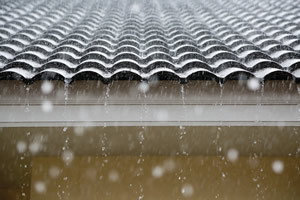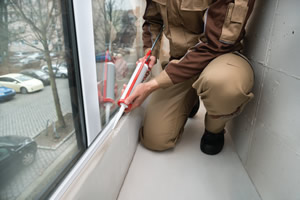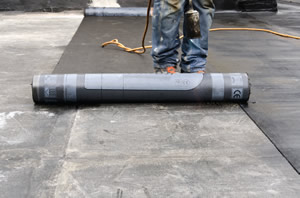Waterproofing Keys

PHOTO © AUMSAMA
An effective building envelope is a basic need for every facility. Maybe bad weather can’t be avoided,
but it can be kept outside. In protecting everything
from roofs, walls and insulation to windows, doors and skylights,
adequate waterproofing is a key, especially in the higher ed setting.
“While building envelope and waterproofing play a large role
on any project, college and university buildings have longer lifespans
that make this even more of a necessity,” says Frances Gooding,
a project architect with Stantec, an engineering, consulting
and design services firm in Plano, TX. She says that intermittent
leaks that aren’t especially destructive in a 15-year commercial
building can create havoc in a 50- to 60-year building. Due to longer
life spans, the materials selected to perform the waterproofing
function must last the life of the building.
Such concerns may take on even more importance given ongoing
budget pressures.
“As operating budgets continue
to stretch thin, college and university
management and organization groups are
expected to do more with less,” says Kevin
Donaghey, project architect at HGA Architects
and Engineers in Los Angeles. “As
a result, the practical aspects of building
performance, maintenance and longevity
are becoming increasingly prominent in
the design conversation, with new facilities
striving to be self-sustaining and operate
on minimal resources.” He notes that while
it’s essential for buildings to be equipped
with weatherproof exterior enclosures that
maintain their efficacy over the life of the
building, this should not be done at the
expense of design excellence. Donaghey
points to a common misconception that
the likelihood of water intrusion is directly
related to the complexity of the exterior
enclosure, and that a simplified building
mass is an effective strategy to combat
potential water intrusion.

PHOTO © ANDREY_POPOV
JUST A PIECE OF CAULK. When your focus is on the larger expanses of your building envelope — in particular the roofs
and walls — also keep in mind that the installation and of the openings to those expanses, such as windows and doors,
are also potential entryways for water to work its way inside your facilities. Caulking is both the activity of and the material
used for closing up joints and gaps in buildings. The function of caulking is to provide thermal insulation and control
water penetration and noise mitigation. For new construction, work with your builder to ensure the right material is being
used and placed correctly, and also, going forward, that caulked areas are routinely inspected and renewed as necessary to
keep your interiors water-free.
“While material transitions and ins/outs of the building façade can provide
unique weatherproofing challenges, proper detailing and installation can allow for a dynamic façade without
increasing the risk of water intrusion,” he says.
Certainly when problems in this area occur, they can pose
serious challenges. Kris Linster, national BECx team leader, facilities
services, with engineering and testing services company
Terracon in Jacksonville, FL, says moisture intrusion is routinely
one of the top sources of warranty callbacks, rework and construction
litigation.
“This goes to show this is a significant issue regarding the
built environment and has overwhelming impacts on the spaces
where we learn, work and play,” he says. “At the level of higher
education, the way that moisture intrusion is uniquely destructive
is in disruption of classroom and lab activities.”
Water penetration can damage valuable equipment inside
the building, and also can also make the exterior of the building
less visually appealing, according to Teddy Williams, assistant
regional business development manager with Western Specialty
Contractors in Dallas, TX.
“The building envelope also affects the energy consumption of
the building,” he says. “A properly maintained building envelope
will have significantly lower energy costs.”
Sustainable Approaches
As with other elements of facility maintenance, sustainability
is an ongoing consideration when to comes to the building envelope
and waterproofing.
“Water is often referred to as the universal solvent because it
can be deleterious to such a variety of substances,” Linster says.
“When it comes to sustainability and resiliency, everyone is attempting
to use materials and products that have longer lives while
prolonging the life of already good materials.” Once materials are
selected and installed, including sustainable ones, they naturally
begin to deteriorate, he says. Catalysts such as rain events and
gravity play unavoidable roles in this process.
Indoor Environmental Quality is a key component of the LEED
system for sustainable design, and moisture levels within the
building play an important role, according to Donaghey.
“The ability of indoor humidity to be maintained within an
acceptable range throughout the life of the building is greatly
enhanced with an effective weatherproofed enclosure,” he says.
“At the extreme end of the indoor environmental quality
spectrum, unwanted moisture can result in hazards such as
toxic mold, posing potential harm to building occupants, and potential litigation to building owners.”
Donaghey notes that sustainable site features such as rainwater
detention systems and bioswales can help divert water away from
the building, serving as a more effective preventative measure
than stopping water at the building enclosure. Too, the selection of
waterproofing products can contribute toward credits in the LEED
materials and resources category.

PHOTO © SERGIOBOCCARDO
Due Consideration
Of course local conditions merit consideration, but water can
pose problems virtually anywhere.
“We’ve encountered contractors in southern California who
have a relatively casual attitude towards waterproofing, pointing
out that it ‘never rains here,’ and that comprehensive waterproofing
on exterior assemblies is less important than in regions with
greater rainfall,” Donaghey says. “However, even the driest of
climates are susceptible to spouts of torrential downpour and
water intrusion.”
He adds that understanding how rainwater behaves, and being
able to visualize the multitude of rain and wind combinations that
a building could be exposed to, is vital in developing details that
will stand the test of weatherproofing.
“The best approach is to always view exterior assemblies
through the lens of worst-case-scenario rain conditions,” Donaghey
says. “This can require a bit of imagination while visiting a
dry and dusty construction site in July, but it will help ensure that
rainwater stays outside the building, where it belongs.”
Linster says that the best dollar-for-dollar method of providing
a well-protected facility is Building Envelope Commissioning
(BECx). This process covers all aspects of the life of a project from
design and product submittal reviews, to construction installation
monitoring and system performance simulation, to ongoing
warranty reviews.
“The typical cost of BECx is orders of magnitude less expensive
than the cost of recladding a building after an issue with moisture
intrusion with returns on investment of up to one thousand percent,”
he says. “BECx is most certainly the best insurance policy
that owners can take out on their facility.”
Donaghey advises specifying requirements in the front-end
specifications for the contractor to protect exterior openings from
rainwater intrusion during construction prior to completion of the
exterior enclosure, as well as always having proper storm water
prevention provisions in place. He reports that his firm has encountered
instances with several recent projects where unanticipated
rainstorms during the dry season caused extensive flooding of the
construction site and water intrusion of the unfinished envelope, due
to inadequate protective or preventative measures by the contractor.
“Extensive water testing is a key to verifying the exterior
assemblies of glazing systems, and if possible, should be performed
on a mock-up installation before the assembly is installed
throughout the project,” Donaghey says. It can also be helpful
to establish expectations with the contractor that waterproofing
matters aren’t fully resolved until the building survives at least
one major rainstorm, which can often help in identifying potential
intrusion points.
This article originally appeared in the issue of .